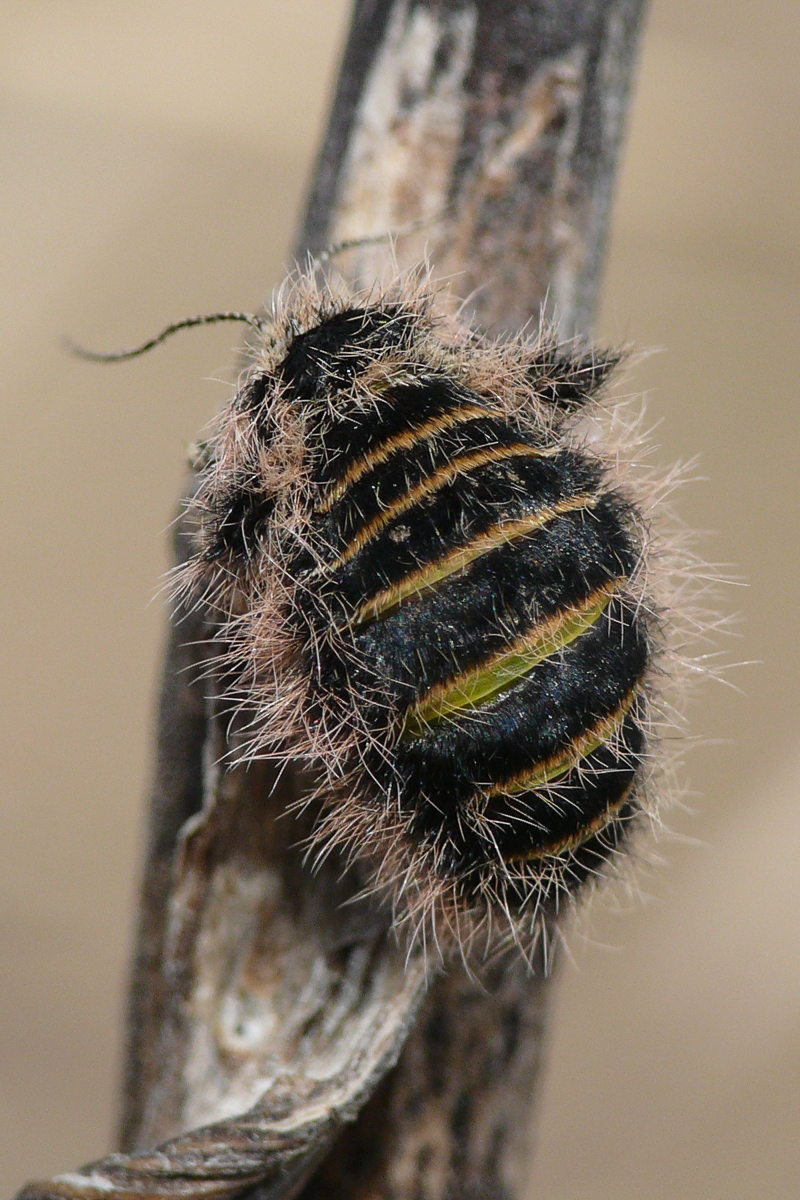
Photo © Harald Sopfle
Lycia zonaria, the belted beauty, is a moth of the family Geometridae. The species was first described by Michael Denis and Ignaz Schiffermüller in 1775 and it is found in most of Europe.
Lycia zonaria is found from central Europe, east to the Russian Urals. The populations in England and Wales are ssp. britannica, those from the Urals are ssp. rossica . The nominate subspecies is found in the south west of Spain and France, but is missing in the Mediterranean. The northern occurrence ranges to Denmark and southern Sweden.
The wingspan is 27–30 mm. Females are wingless. Males are variable, but always easy to recognize. Characteristic are the dark veins and broad dark distal area, bounded proximally and traversed by sharply white lines. The female is distinguished by its yellowish abdominal belts. The rudimentary white wings are common to the genus.
Adult males are on wing from March to April.
The larvae feed on a range of low-growing plants, including Salix repens and Rosa pimpinellifolia.
The species is a typical resident of dry grassland, occurring at forest edges, sandy slopes and heaths.
Source: Wikipedia
The primary larval foodplants are Autumn Hawkbit (Scorzoneroides autumnalis), Broom (Cytisus scoparius), Burnet Rose (Rosa spinosissima), cat's-ears (Hypochaeris spp.), clovers (Trifolium spp.), Colt's-foot (Tussilago farfara), Common Bird's-foot-trefoil (Lotus corniculatus), Creeping Willow (Salix repens), dandelions (Taraxacum spp.), docks (Rumex spp.), Kidney Vetch (Anthyllis vulneraria), knapweeds (Centaurea spp.), Knotgrass (Polygonum aviculare), Meadow Vetchling (Lathyrus pratensis), Sea Plantain (Plantago maritima), thistles (Carduus spp. and Cirsium spp.), Wild Thyme (Thymus drucei), Yarrow (Achillea millefolium) and Yellow Iris (Iris pseudacorus).